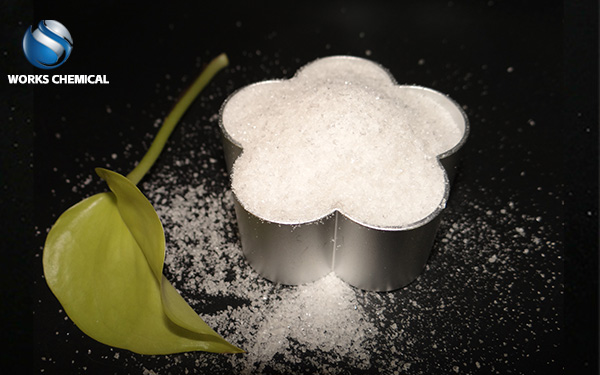
With the acceleration of urbanization, the volume of sewage treatment has soared. As a by-product of sewage treatment, the disposal and resource utilization of sludge have become an important issue in global environmental governance. Traditional sludge treatment processes generally face bottlenecks such as low efficiency, high energy consumption, and high risks of secondary pollution. However, the research and application of sludge enhancers are providing breakthrough solutions for the efficient concentration and dewatering of sludge.

I. Current Situation and Technical Bottlenecks of Sludge Treatment
Sludge has a high water content (usually over 99%), a large volume, and contains a large number of pathogens, heavy metals and organic pollutants. Direct landfill or storage is prone to cause environmental risks. Traditional mechanical dewatering (such as belt filter press and centrifugal dewatering) is limited by the stable colloidal structure of sludge and the difficulty in releasing capillary water. Even after dewatering, the moisture content of sludge still reaches 75% to 85%, resulting in high subsequent disposal costs. In addition, although chemical conditioning agents (such as polyaluminium chloride and polyacrylamide) can improve dewatering performance, they have problems such as large dosage, corrosion of equipment, and increase in sludge ash content.
Ii. The Mechanism of Action and Technological Innovation of Sludge Enhancers
The sludge enhancer solves the problem of sludge dewatering at the molecular level through the synergistic effect of multiple components. Its technological breakthroughs are mainly reflected in the following aspects:
Cell wall breaking and the release of water molecules
The biological enzymes or surfactants in the sludge enhancer can specifically destroy the cell walls of microorganisms in the sludge, release intracellular bound water, simultaneously reduce the surface charge of sludge particles, weaken the stability of colloids, and convert bound water into free water.
Skeleton construction and pore optimization
By adding inorganic framework materials or organic high-molecular crosslinking agents, a rigid porous structure is formed in the sludge, preventing the clogging of filter holes during the dewatering process and significantly improving the filtration efficiency.
Microbial metabolic regulation
Some sludge enhancers accelerate the decomposition of refractory organic matter in sludge by adding specific strains of bacteria or metabolic promoters, reduce sludge viscosity, and simultaneously lower the emission of malodorous gases.
Iii. Technical Advantages of Sludge Enhancers
Efficient dehydration, moisture content breakthrough
Laboratory and engineering cases show that after using sludge enhancers, the sludge dewatering efficiency can be increased by 30% to 50%, and the moisture content can be reduced to below 60%, with some processes even reaching below 50%, which is far lower than traditional methods.
Energy conservation and consumption reduction, cost optimization
The dosage of sludge enhancer is only 50%-70% of that of traditional chemical agents, and the dewatering time is shortened, reducing equipment energy consumption by 20%-30%. Take a sewage treatment plant with a daily processing capacity of 100 tons of sludge as an example, the annual operating cost can be reduced by millions of yuan.
Environmentally friendly and with enhanced potential for resource utilization
The low-residue and non-toxic sludge enhancer formula reduces the risk of secondary pollution, increases the calorific value of dewatered sludge by 15% to 20%, and makes it easier to achieve resource utilization paths such as incineration power generation or building material utilization.
Iv. Typical Application Scenarios and Cases
After adopting the compound sludge enhancer, the sludge volume of a certain sewage treatment plant in Shanghai decreased by 65%, the disposal cost dropped by 40%, and the COD of the dewatered filtrate decreased by 30%.
Industrial sludge treatment: In a certain chemical industrial park's printing and dyeing sludge project, the moisture content was reduced from 82% to 55% through the combined use of sludge efficiency enhancers and plate and frame filter presses, achieving an 80% reduction in sludge volume.
Emergency response scenario: In sudden water pollution incidents, portable sludge enhancers can quickly reduce the fluidity of sludge, buying time for subsequent disposal.
V. Challenges and Future Directions
Although sludge enhancers have shown significant advantages, their large-scale promotion still needs to break through the following bottlenecks:
Customized formula development: Optimize the components of sludge enhancers based on different sludge characteristics (such as organic matter content and types of heavy metals);
Full life cycle assessment: Long-term monitoring of the impact of sludge enhancers on soil and groundwater is required.
Intelligent dosing system: Combined with online detection technology for sludge characteristics, it achieves precise dosing of chemicals.
In the future, sludge enhancers will be coupled with new technologies such as pyrolysis and carbonization to form an integrated process of "conditioning - dewatering - resource utilization", promoting sludge treatment towards the goals of "reduction, harmlessness and resource utilization".
Conclusion
The emergence of sludge efficiency enhancers not only represents an innovation in traditional sludge treatment technologies but also serves as a microcosm of the upgrading of the environmental protection industry under the "dual carbon" goals. Through the cross-innovation of materials science and environmental engineering, humanity is gradually unlocking the potential value of sludge, a "misplaced resource", and opening up new paths for the sustainable development of cities.